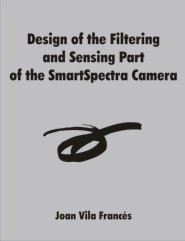LibraryPhysical Science & MathEngineering
Design of the Filtering and Sensing Part of the SmartSpectra Camera
| Institution: | University of Valencia Valencia |
|---|---|
| Advisor(s): | Dr. Javier Calpe Maravilla |
| Degree: | M.S. |
| Year: | 2003 |
| Volume: | 180 pages |
| ISBN-10: | 1581122780 |
| ISBN-13: | 9781581122787 |
Abstract
This document shows the current state of the research work done around the SmartSpectra project. The SmartSpectra project is a Research, Technological development and Demonstration (RTD) project funded under EU’s Fifth Framework Programme (FP5) by the Information Society Technologies (IST) Programme. The project pursues the development of a Smart Multispectral System for Commercial Applications.
SmartSpectra is an acronym of "Smart Multispectral System for Commercial Applications." In this project, a Smart Multispectral System will be designed and implemented. The system will allow multispectral imaging with an aff ordable cost and proven robustness, in order to achieve a broad use of multispectral techniques in several commercial areas and applications. The system will have the capability to be integrated in currently established production systems. Moreover,it will be flexible enough to be applicable to a wide range of applications.
The document is organized as follows: In the introductory chapter, we present the SmartSpectra project, emphasizing the parts in which we are involved. Next chapter is devoted to explain the concept of the SmartSpectra camera, defining its specifications. Chapters 3 and 4 detail the realised work regarding Workpackages 2 and 3 of the project. Workpackage 2 deals with the optical and sensing part of the SmartSpectra system. It summarizes the state of the art in VIS & NIR technologies, lists the purchased sensors for the project and describes the AOTF (Acousto-Optic Tunable Filter) technology. Workpackage 3 explains the sensor electronics and interface. Two different prototypes of the SmartSpectra camera are described, along with the Firewire subsystem. These chapters are followed by a Progress Review and Future Work. Last chapter is a final summary of the work. The document ends with a group of annexes showing the outcomes of the work.

